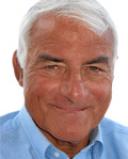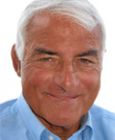Consumer Behavior
Connecting Dots Between The Opioid Epidemic and Philanthropy
The Sackler family philanthropy is based on opioid profits.
Posted October 12, 2016
The Sackler family is among the world’s richest families and greatest donors. But their generosity should not, cannot, obscure the disreputable source of their fortune.
The Sackler name is prominently displayed at the Smithsonian, Metropolitan Museum of Art, Guggenheim, Tate, Louvre, and Harvard Museums; at various medical and science facilities at Berkeley, Tufts, MIT, Oxford, King’s College, University Of London, and Tel Aviv University; at the beautiful Kew Gardens; and in many other important institutions in the US and abroad. Family members have received some of the very highest philanthropic awards and titles in many different countries, including one that was personally presented by the Queen of England.
The Sackler fortune is enormous, $14 billion according to Forbes, and self-made. None of the Sackler family fortune was inherited. Their fortune is greater than the more famous, old money families like the Rockefellers, the Busches, and the Mellons.
The Sackler brothers, Arthur, Raymond, and Mortimer, all began their careers as psychiatrists, an unpromising profession when it comes to accumulating vast wealth. But the Sacklers were enterprising, energetic, and early on displayed remarkable business savvy. They made their initial fortune by inventing many of the aggressive marketing techniques that turned the pharmaceutical industry into a profit machine. They taught drug companies how to conduct the full court selling of drugs to doctors and how to gear sales pitches directly to consumers.
One can heartily dislike the pharmaceutical marketing machine and disapprove of the Sackler role in creating it – but still recognize it as within ethical bounds. It is much harder, however, to justify the Sackler role in creating the prescription opioid epidemic that is ravaging their own country.
In 1952, the Sacklers purchased a small drug company – Purdue Pharma – and have since turned it into a hugely profitable company. Since releasing OxyContin to the market, the company has generated more than than $35 billion in sales in the US and about an equal amount of total sales around the globe.
The star attraction was OxyContin, a time-released, preparation of oxycodone, that was misleadingly marketed as addiction-proof. In a later blog, we will go into detail on all the ways Purdue pushed opioids and created the deadliest drug epidemic in our history. Suffice to say, the company was only marginally less ruthless than the drug cartels and is now responsible for at least twice as many deaths per year. According to Castle Medical, a healthcare company, "of the 15,000 American deaths caused by prescription painkillers each year (a number far higher than the deaths caused by illegal substances), approximately 1,000 are attributed to Oxycontin...On average, it has been estimated that on a global scale,100,000 people die from Oxycontin abuse per year."
The Sackler family seeks publicity and fame when it comes to their philanthropy, but keeps a very low profile when it comes to the notoriety of OxyContin gains. Thus far, they have largely succeeded in avoiding blame for the devastating epidemic of prescription opioid addiction that they caused and continue to profit from. This despite the fact that nine family members are currently on the Purdue board. There are encouraging signs, however, that Sackler impunity may soon change.
Richard Sackler has been the most active family member directing Purdue affairs and his fingerprints are all over the OxyContin disaster. In 1971, shortly after graduating medical school, he began work at Purdue and has held just about every important leadership position in the company – from directing its research and marketing to serving as president and co-chair of the board.
Of great public interest, Richard Sackler was recently deposed in a lawsuit for the first time – in regard to Kentucky’s claims that Purdue continued its illegal marketing of OxyContin. It is easy to imagine the questions he must have been asked: What did you know about the addicting impact of OxyContin? When did you know it? What have you done to cause or prevent Purdue’s misleading the medical profession and the public? What do your internal company documents show?
Sackler’s deposition is one of several sealed documents that a Kentucky judge ordered to be released to the public at the request of statnews.com. Purdue said it will appeal the ruling, meaning the documents will be withheld, pending the outcome of the appeal.
In fact, it's been public knowledge for at least a decade that OxyContin was misleadingly marketed and causing great damage. In 2007 the United States government sued Purdue and extracted $600 million dollars in fines in addition to an admission from company executives that the company was knowingly misleading doctors and patients. Surely that should have been a wake up call for its company co-chairman. It is hard to believe that Richard Sackler can offer even a shred of plausible deniability.
Current efforts to make Sackler’s testimony public are crucial in strides to make the family accountable for the actions of the company. Purdue is a privately held company and all its profits go to the Sacklers in one form or another. In any fair world, Purdue and the Sacklers should be hit with multibillion dollar fines – the proceeds devoted to the compensation and rehabilitation of the millions of people they have harmed and to the reimbursement of the states (and their taxpayers) for the enormous public costs occasioned by the opioid epidemic.
It makes no sense to allow the Sacklers free rein to accumulate ever more ill gotten profits, even if that money makes its way to museums and medical centers. The family should be forced to disgorge a significant portion of its fortune to help clean up the opioid mess they created.
If the Sacklers really are philanthropists, and not just fame-seekers, they should want to do the right thing and help those they have hurt.
Sources
1) The Week, http://theweek.com/articles/541564/how-american-opiate-epidemic-started…
2) The 2007 plea agreement, United States v. Purdue, http://graphics8.nytimes.com/packages/pdf/business/20070510_DRUG_Purdue…
3) Forbes, http://www.forbes.com/sites/alexmorrell/2015/07/01/the-oxycontin-clan-t…
4) CNBC, http://www.cnbc.com/2016/05/11/judge-unseals-records-from-kentuckys-oxy…
5) Castle Medical, http://www.castlemedical.com/blog/full/On-Average-How-Many-People-Die-F…
A version of this article was originally published on Recovery Brands' Pro Talk/Pro Corner
http://www.rehabs.com/pro-talk-articles/yes-benzos-are-bad-for-you/




